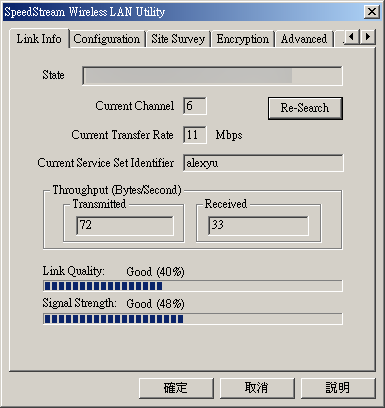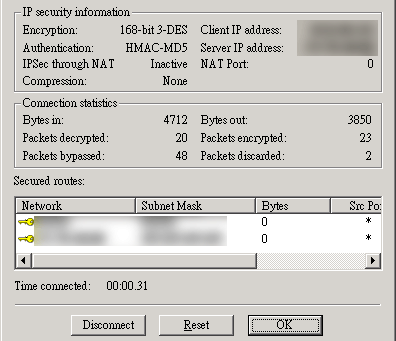- A Local Area Network (LAN) is a smaller network within one location or between several buildings
- A Metropolitan Network (MAN, politically incorrect, no WOMAN!) is a midsize network spanning the city.
- A Wide Area Network (WAN) is a giant network spanning across several cities or even several continents.
Usually the term "LAN" is used to generalize all of the above networks. For example, when one calls Netware a "LAN server," it does not imply that Netware isn't suitable for MAN and WAN.
- A Wireless LAN (WLAN) is is a variant of LAN.
 The preceding network type is classified by the magnitude of coverage (i.e. distance). Currently most WLAN standards (802.11.X) are based on the original Ethernet design, which is a broadcasting system and it is up to any client to grab the transmission. Since WLAN is said to be just like a regular LAN without cabling, one may question whether it could be a standalone category. Nonetheless, most wireless LANs are confined within a smaller area (e.g. 500 feet), which is even smaller than that of a wired LAN, and therefore the same criterion of classification (distance) may still be applied.
The preceding network type is classified by the magnitude of coverage (i.e. distance). Currently most WLAN standards (802.11.X) are based on the original Ethernet design, which is a broadcasting system and it is up to any client to grab the transmission. Since WLAN is said to be just like a regular LAN without cabling, one may question whether it could be a standalone category. Nonetheless, most wireless LANs are confined within a smaller area (e.g. 500 feet), which is even smaller than that of a wired LAN, and therefore the same criterion of classification (distance) may still be applied.
Wireless LAN is operated in unlicensed frequency spectrums and thus performance and security become major issues. For example, anything with high water content would absorb 2.4-Ghz Radio Frequency energy. A room which is stacked with a lot of papers can have transmission "shadows" or "dead spots". Microwave ovens, cordless phones, satellite systems could affect the WLAN's performance, too. Thus, it is not uncommon that a WLAN operates in a lower throughput speed than what it is claimed. For example, the figure on the right shows that the ideal throughout is 11 Mbps, but the actual speed may be 6 Mbps or even less (Both the link quality and the signal strength are less than 50%, but they are still considered "good." In America, nothing is "bad" or "small." There are "good," "better," and "best," and also "medium," "large," and "extra large.").
 Roughly speaking, the Internet is a public network because the networking devices are shared by the public rather than being owned by your own company. On the contrary, a LAN is a private network because the networks are connected by the company's equipment. Between the public and the private networks, there is a network type called virtual private network (VPN). A VPN is constructed by public wires and data are transferred through the Internet. However, the data are encrypted for security reasons. Although the wiring is public, it is for private use and thus this network type is called virtual private network.
Roughly speaking, the Internet is a public network because the networking devices are shared by the public rather than being owned by your own company. On the contrary, a LAN is a private network because the networks are connected by the company's equipment. Between the public and the private networks, there is a network type called virtual private network (VPN). A VPN is constructed by public wires and data are transferred through the Internet. However, the data are encrypted for security reasons. Although the wiring is public, it is for private use and thus this network type is called virtual private network.

